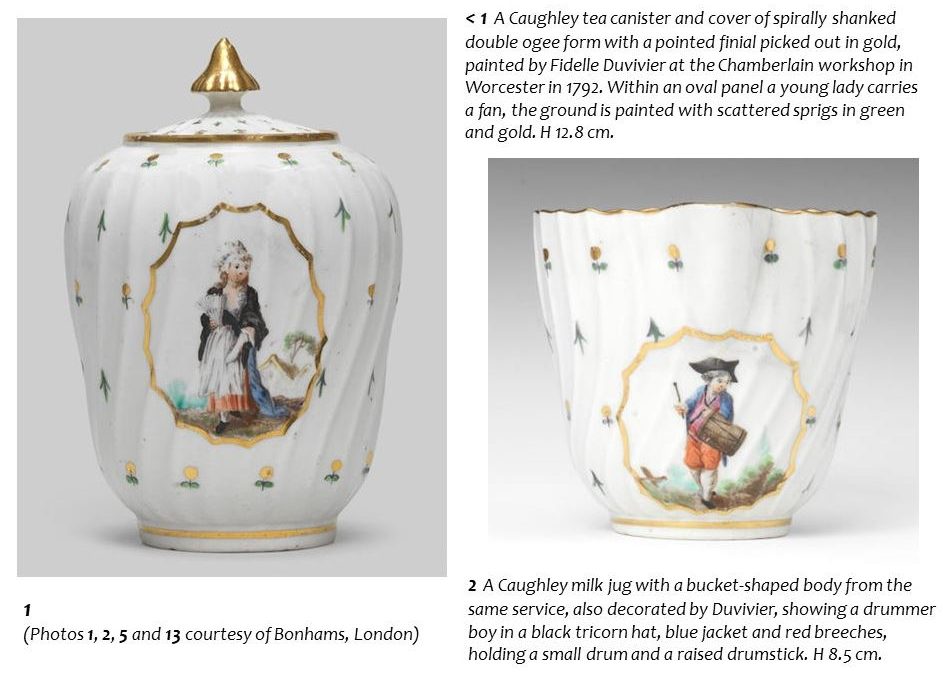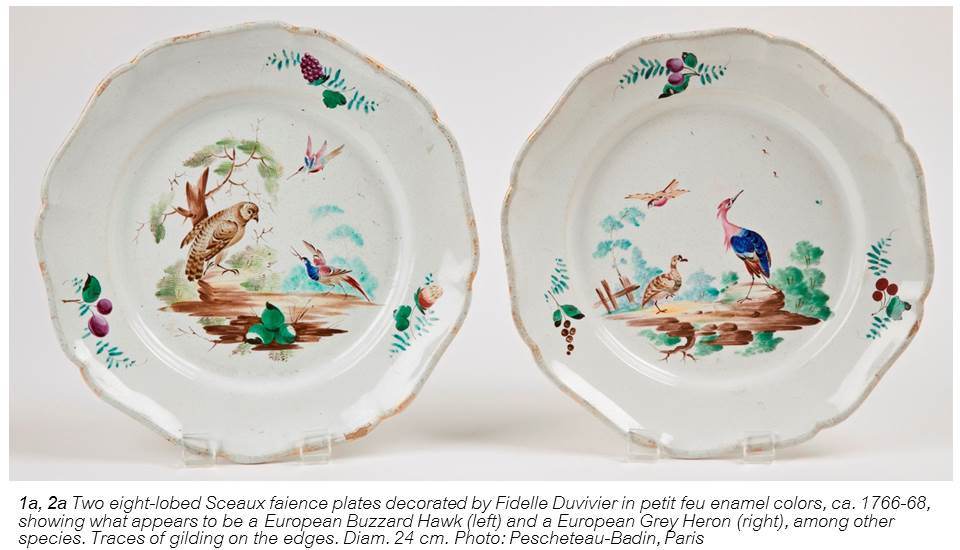
by Charlotte Jacob-Hanson | Jan 22, 2020 | Uncategorized
It was Geoffrey Godden who discovered that Fidelle Duvivier worked for a short time at the Chamberlain factory in Worcester in 1792, and decorated most pieces of a Caughley porcelain tea and coffee service with scenes of children at work and play. It was a theme he had already used on New Hall porcelain (cf. Blogpost 17: Country togs, angelic faces –Duvivier’s children on New Hall – July/August, 2018, and image 6 below). Godden’s investigations into Chamberlain-decorated porcelain done in Worcester and the Chamberlains’ relationship with Thomas Turner’s Caughley factory in Shropshire, plus his own keen interest in Duvivier’s career and travels, led to new revelations concerning these historical establishments and actors – as well as important new evidence about the painter’s employment after 1790.

by Charlotte Jacob-Hanson | Sep 1, 2019 | Uncategorized
Last year two more Sceaux faience plates with bird decoration by Duvivier (1a, 2a) were auctioned in Paris(i), and both would have belonged to a service already featured in a previous blogpost (“Identifying Duvivier’s birds on two Sceaux faience plates” from May 24, 2017). The first two plates (shown again in 3a below) illustrated a different technique of rendering vegetation in a much more fluid style, which we see Duvivier has used here as well. Added to the swan and a stylized peahen on the first two examples, we find two more species: a European Buzzard Hawk and, most likely, a Grey Heron, both standing on rocks.

by Charlotte Jacob-Hanson | Jun 26, 2019 | Uncategorized
A number of Sceaux faience plates with Duvivier’s striking bird decoration have appeared recently on the French auction market and are shown here along with three related examples of this type (1, 5, 6) first ascribed to his hand in In the Footsteps of Fidelle Duvivier (2016).(ii)

by Charlotte Jacob-Hanson | May 10, 2019 | Uncategorized
While perusing the online collections of the National Trust I came across the images of a small Mennecy jug (2, 3) whose decoration immediately reminded me of another one of this manufactory, also painted by Fidelle Duvivier with little cupids on clouds (4). It was the earliest example of this type of decoration by Duvivier that I’d found, and I included it in my book.(i) This second example (at Hinton Ampner House, 1) is equally important, and I became curious to know who its owner was and more about its present home.

by Charlotte Jacob-Hanson | Mar 5, 2019 | Uncategorized
When Fidelle Duvivier returned to France to work at Sceaux for the second time he was a young man in his early thirties. He had with him his English wife Elizabeth (née Thomas), who was soon to give birth to their second child, a girl, on February 20, 1775.(i) The child’s baptism was recorded in the registry of the Catholic church of Saint Jean-Baptiste, and is the only documentation we have of the family’s presence in Sceaux. Prior to their arrival, Duvivier had signed a four-year contract to work for William Duesbury of Derby beginning in late 1769, and he had done much putto (cherub) decoration with little winged allegorical amours on clouds in the popular French style of François Boucher. He was therefore well prepared to do similar decoration on Sceaux porcelain (2a, 2b) of the Glot period (1772 – c. 1794), as the examples here demonstrate.





